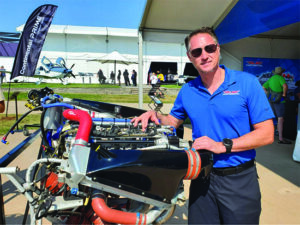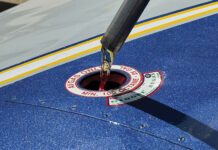With a record-setting AirVenture in the books, we walk away enthusiastic that the supply chain troubles that hindered new products (and even the supply of existing ones) could finally be old news.
While it wasn’t exactly a booming year for new product announcements, there were some worth talking about—and keeping close tabs on as we move into the coming new year.
SOME FRESH AVIONICS
A big surprise came from the big Honeywell exhibit, where the new KX200 digital navcomm was unveiled for the first time. Presumably under development for a while, the new radio is designed to be a direct slide-in replacement for most flavors of the KX155/165 radios. It has a high-resolution color LCD display and a built-in VHF nav receiver (including localizer/glideslope), is compatible with both 14- and 28-volt electrical systems (KX155/165 radios are voltage specific) and is compatible with existing King nav indicators. That’s a big deal for buyers on a tight budget. Still, before making the $5200 investment, be sure the existing indicator and wiring are healthy enough—some aging aircraft that haven’t seen an upgrade in years will need some rework.
Over at Dynon Avionics, buyers have been waiting years for the next-gen EFIS replacement for the aged D10A—an instrument that was used as the backup to the Dynon SkyView HDX suite. Enter the D30. Priced at $1945, the D30 has a 4-inch high-resolution touchscreen display, plus an integral backup battery with up to five hours of endurance. The D30 is a space saver, measuring 3.7 inches deep, and mounts in what Dynon calls a “slightly modified” 3 1/8-inch instrument hole via a docking ring mounting bracket.
The D30 is only FAA approved when it’s installed along with the STC’d SkyView HDX, so don’t plan on installing it as the primary and only attitude display in certified aircraft. The D30 uses the same wiring and pitot/static input as the old D10A. The instrument does not have heading or nav display capability.
VAN’S AIRCRAFT ADDRESSES PARTS ISSUE
There were a lot of Van’s experimental kit builders looking for answers to the problems with previously delivered laser-cut parts. The defects are the result of changes in the process for laser-cutting parts by an outside vendor. From February 2022 through June 2023, Van’s transitioned some parts from traditional punch-press manufacturing to an outside vendor that could laser-cut rivet holes. The move was intended to increase the company’s throughput and reduce the lead time and backlogs in kit deliveries. Only thinner parts were outsourced in this fashion and most, according to President and chief engineer Rian Johnson, were in low-stress and non-critical parts of the airframe. Van’s has since stopped using the laser-cut parts in this application and, to help bolster factory productivity, invested in a new, larger press-punch machine.
Originally, Van’s specified that the laser make a “pretzel” cut in the part—starting in the center, moving to the periphery and concluding back in the center. Apparently, the vendor changed the cutting path to begin in the middle, extend to the periphery of the hole, stop briefly and turn direction to follow the hole around, eventually stopping at that same point at the end of the cut. This caused a small portion of the metal to become overheated. Builders began noting these defects in parts, some worse than others, and then began to see cracking after the hole had been dimpled. Worth mentioning is that RVs have a significant percentage of flush rivets.
The upshot for RV builders, in this case mainly the RV-10 and RV-14 models, is that certain parts are likely to be assessed as suitable for low-stress locations but some, like tail-surface spars, will require replacement. The company has told builders to stop building with the laser-cut parts for now. Johnson urged patience to allow Van’s to finish its extensive testing, said to be in the 45- to 60-day range, before tearing into any completed pieces. He said that the company needs to determine if associated parts are impacted before finalizing its recommendations. Van’s is also readying a process for builders to receive replacement parts.
100LL REPLACEMENT TALKS

EAGLE (Eliminate Aviation Gasoline Lead Emissions) brought its agenda to the show, as expected. GAMI’s George Braly, whose G100UL is available by STC for all gasoline aircraft piston engines, said he met with members the EAGLE task force, which was formed 18 months ago. He told sister publication AVweb at a forum held on opening day of AirVenture 2023 on the unleaded fuel situation that he offered solutions to issues raised about the accessibility of G100UL, especially for non-certified aircraft.

EAA Chairman Jack Pelton has repeatedly said the STC process is unavailable to those who fly experimentals and warbirds because they are uncertified and ineligible for STCs. Although the unleaded fuel is documented as safe for the engines, builders and restorers must ensure it is safe for the tanks, seals and other parts of the fuel system. Braly said he offered to show the group how that compliance can be achieved by any builder without his releasing trade secrets, but they haven’t taken him up on that.
EAGLE has set 2030 as the year that leaded avgas is eliminated entirely and committee member Lirio Liu, who heads the FAA’s certification department, said there is a lot riding on getting it done. “The world is looking to the U.S. to solve this problem,” she said.

AIRPLANES AND ENGINES
The big news from Piper Aircraft at the show was that it inked a deal with Arizona-based Sierra Charlie Flight School for 50 Archer TX training aircraft. Powered by a 180-HP Lycoming I0-360-B4A piston engine with a Sensenich fixed-pitch propeller, the Archer TX makes 128 knots at its 75 percent power maximum cruise speed. At slower speeds, maximum range is 522 nautical miles. Deliveries of the single-engine aircraft are scheduled to start in 2026.
For something a bit more interesting than a Piper Archer, a Florida company is hoping to build a modernized version of the Consolidated PBY Catalina flying boat, an aircraft developed almost 90 years ago and most famously used to hunt Nazi U-boats in the Second World War. Catalina Aircraft has announced it plans to build a turboprop amphib flying boat using the “same design principles” as the lumbering twin. A few of the type are still used in commercial service as water bombers and cargo planes, and several museums keep flying versions. The company thinks there is still a niche to be filled in civilian and military service.
DeltaHawk wasn’t the only company with news of engine certification. (See the July 2023 Aviation Consumer for a report.) Continental announced that it has an FAA type certificate for its CD-300 Jet-A-burning engine. “As we’re expanding the global reach of CD-300-powered aircraft, the FAA approval is a big milestone for opening sales in many parts of the world, including North America,” Continental’s Oliver Leber said in an interview. The Diamond DA50 RG was the launch aircraft and other applications are expected.
Textron Aviation was showing off a new Cessna 172 Skyhawk sporting a completely updated interior that will also be included in the 182 Skylane and 206 Stationair. The redesign includes new seating, more maintenance- friendly side panels and trim work, more rugged flooring, better designed air vents and USB power at each seat station. And for the first time, Textron brought its clean-sheet Denali turboprop single to the show. The Denali is currently in flight testing and will be certified with Garmin’s Autoland and a 1300-SHP FADEC Catalyst engine.





